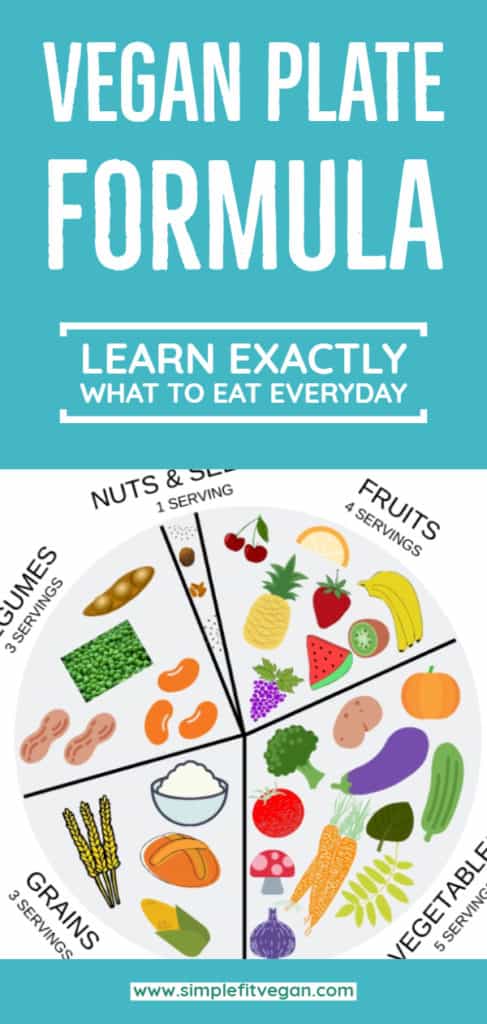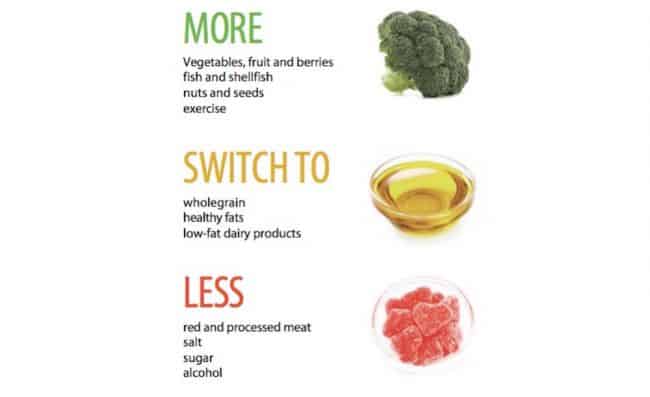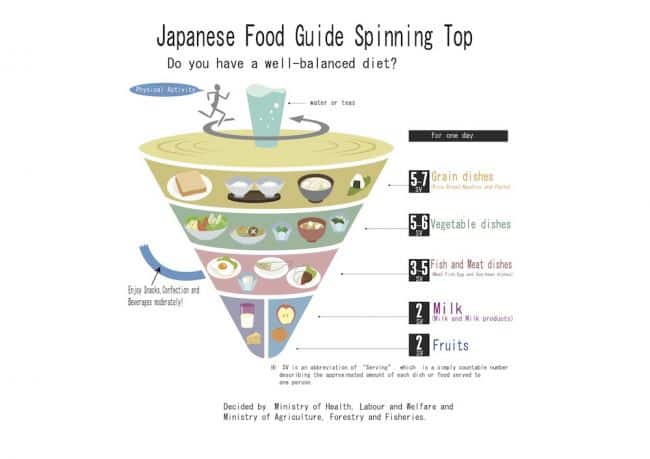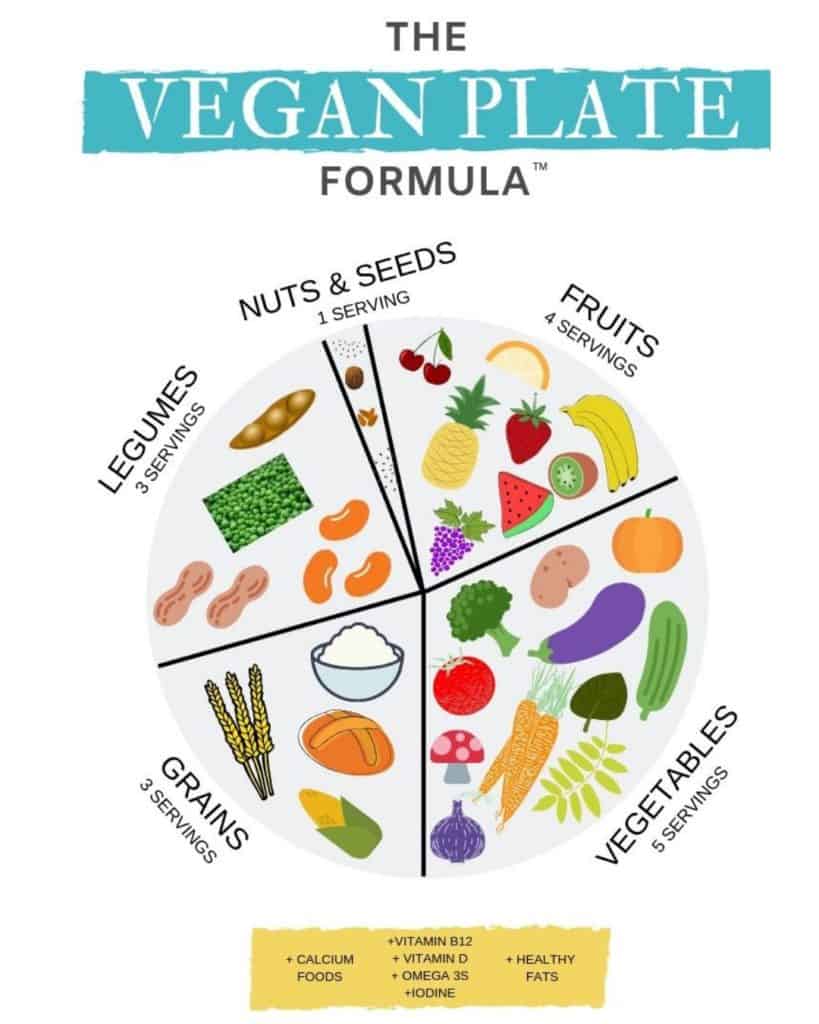My brand new cookbook is out on Amazon! It’s called “30-Minute Plant-Based Recipes” and it’s perfect for busy vegans. Grab it now!
The Vegan Plate Formula will teach you exactly what to eat every day to get all the right nutrients your body needs to live a healthy plant-based lifestyle!

Ever since I became a vegan I had a hard time figuring out what to eat so that I won’t lack vitamins and key nutrients. It didn’t help that everyone around me expressed their concern about me being a malnutritioned vegan either!
I’ve read dozens of articles over the internet and most of them either talk about vegan nutrition in terms of key deficiencies, for example, what to do get vitamin B12, or the information is too generic.
After many hours of research through medical articles and vegan nutrition books, I’ve decided to write this article to share the practical information with my fellow vegans on what we should eat every day for optimal plant-based nutrition.
What’s the Vegan Plate Formula
The United States Department of Agriculture (USDA) started to produce food guides in the early 20th century, 1916 to be exact! There have been several iterations of food guides produced since then. They all aimed at helping the general population select foods for optimal nutrition given the economic environment and available nutrition knowledge at that time.
In the 1990s, USDA made food pyramids popular. It was an easy image for people to remember. Since 2001, the government switched to producing “Food Plates” which featured a round plate with colorful sections for each food group that they recommended consuming every day.
I really like the food plate image because it’s so relatable and anyone can understand what proportions to eat by just looking at it.
The U.S. isn’t the only country that publishes food guides. In fact, there are 23 countries in the world that publish food guides that are tailored to their cultures around the world.
Some of the interesting ones that I found are from:
Netherlands – the “Wheel of Five” food guide highlights four groups of food and one group of beverages including water, tea, and coffee. I find it so fascinating that the Netherlands emphasizes the importance of water and beverages by including it into the guide.

Sweden – keeps it simple and only has three categories on its food guide.

Japan – highlights the importance of daily physical activity by showing it on top of its food guide.

Where the vegan version comes from
The vegan version of the food guide comes from using the U.S. food plate guide and modifying it to suit a plant-based way of living.
The USDA advises eating vegetables, fruits, grains, protein, and dairy. The Vegan Plate FormulaTM also advises to eat vegetables, fruits, grains and breaks down protein further by including legumes and adding nuts and seeds.
The Vegan Plate Formulatm
As you can see from the graphic below, the Vegan Plate Formulatm shows you exactly what and how much to eat every day to get the nutrients you need for a healthy plant-based lifestyle.
I love the graphical representation of the plate because it’s so visual! You can print it out and put it on your fridge or put it as a screensaver on our phone as a daily reminder!

Based on the Vegan Plate Formulatm, you should be eating each of the food groups every day. The formula is designed to help you take the guesswork out of your daily meals.
Important to remember: Vary it up! Let’s say you love quinoa and you decide that you will choose it as your grain source. That is great because quinoa is an excellent source of plant-based protein and it’s also gluten-free if that’s important to you. The issue arises if you only choose to eat quinoa day after day for weeks. You see, each grain has a unique nutrition profile.
By diversifying and varying up parts of the plate which include vegetables, fruits, legumes, grains, nuts, and seeds, you will ensure that you’re feeding your body what it needs.
How much is one serving
The Vegan Plate Formulatm is structured in terms of the number of servings for each food group. How do you know how much is one serving?
Let’s break it all down.
Check out my free email Vegan Nutrition Basics Mini-Course!
How difficult is it to follow the Vegan Plate Formula?
In my opinion, the Vegan Plate Formulatm is relatively easy to follow. One important point about it is that it’s geared more towards whole foods. The Vegan Plate Formulatm is not completely free of processed foods, for instance, it includes bread and tortillas as a grain source.
What you won’t find is lots of sugar, candy, chips, vegan cheese, and mock meats. While I think it’s totally OK to eat these foods from time to time, they often are high in empty calories and provide very little nutritional value. Therefore, it is best for your health to reduce the intake of these foods on a daily basis.
Why Vegan Plate Formula works
The Vegan Plate Formulatm covers all major bases to help you achieve optimal vegan nutrition. It helps visualize what you need to include in your daily plate. It helps categorize foods into buckets so that it’s easy for you the mentally check-off the box.
For example, let’s say you decide to have a black bean burger on a whole wheat bun topped with lettuce, tomato, avocado, and onion. You can mentally map this against the Vegan Plate Formulatm and quickly check-off the food groups:
Black bean patty = 1 serving of legumes
Whole grain bun = 2 servings of grains
Lettuce, tomato, avocado, and onion = 1 serving of vegetables
See, how easy it was? You can of course track what you eat daily on a piece of paper or in the workbook that comes with the Vegan Nutrition Mini-Course. After a while though, to many it will become second nature and you may not need to track anything at all.
Are you ready to solidify what you’ve learned about the Vegan Plate Formulatm and learn other major aspects of vegan nutrition? Take my free e-mail mini-course on Vegan Nutrition Basics! Click below to enroll:
My brand new cookbook is out on Amazon! It’s called “30-Minute Plant-Based Recipes” and it’s perfect for busy vegans. Grab it now!

Leave a Reply